Industry Guests
Real-World Industry Experts
Every Open World summer workshop includes a day in which a creative professional from the industry visits with students to share their knowledge and passion for their career. These industry guests help students understand that the skills they’re learning today can have a long-term, practical impact on their future.
Open World Team
Core Team
DigiPen’s University Professors
Industry Guests

Isabel Anderson
She/Her
Isabel is a full-time artist, born and raised in Seattle and now living in Portland, Oregon.
For her undergraduate degree, Isabel studied at Scripps College and majored in Mixed Media Art with a thesis in Video Art. Later, she attended DigiPen Institute of Technology and received an MFA in Digital Art. DigiPen is where she got started on her career in earnest, being a digital sculptor and beginning her journey into action-figure jointing and 3D printing. After graduating from DigiPen, Isabel spent almost five years at Funko, where she learned how to sculpt with precision and speed, make different types of toys, and what the industry looks like from the inside.
Isabel can’t get enough of toys or sculpting, and she started her own doll business while working full time at Funko to experiment with more elaborate jointing systems. She left Funko in 2021 to work on her own toys full time and now presents at shows and conventions across the country, selling dolls to customers all around the world.
For Isabel, the greatest part of being a digital artist is the freedom of creativity and that there are truly no limits on her art.
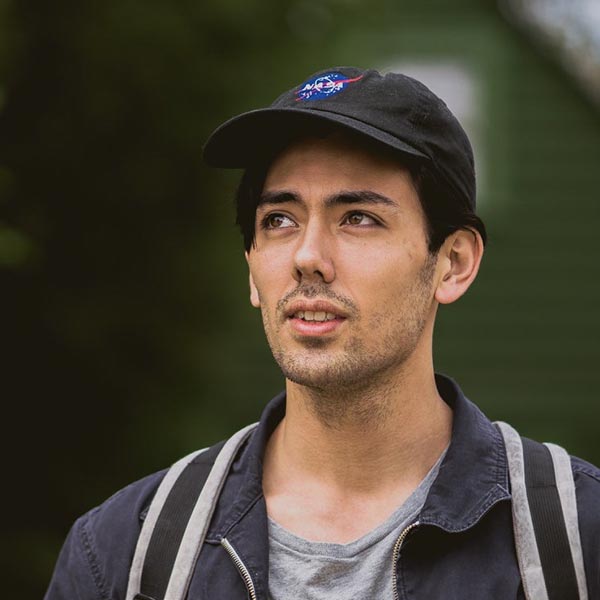
Cameron Asao
He/His
After a brief stint at Ringling College of Art and Design, Cameron left the school to hone his skills elsewhere. He ended up working on feature films in stop motion animation, which constitutes most of his professional work over 6 years between Laika and Netflix Animation. Recently he made a career change to advertising to work as an Art Director at Wieden+Kennedy (with clients including Nike, Old Spice, Trolli, and others).
Drawing was Cameron’s focus for many years, and although he never became an illustrator, he still considers painting and figurative art skills to be his expertise. He has done a considerable amount of 3D work for feature films, mostly at his most recent position on Wendell & Wild, a Netflix collaboration between Henry Selick (The Nightmare Before Christmas) and Jordan Peele (Get Out). As a scenic painter, he painted and textured props and sets in the movie, which requires an understanding of surfaces and materials, carpentry, fabrication, mixing paints, and the paints’ chemistry. Additionally, he painted stop-motion and live-action puppets.
Within advertising, Cameron’s main work is coming up with ideas for commercials and advertising campaigns, a skill that involves script writing, visual development, project management, graphic design, illustration, storyboarding, pitching, and extensive research.
Selected Credits
- Uncredited Jr. Scenic, Missing Link
- Jr. Scenic, Canceled Laika Studios Project
- Scenic Painter, Wendell & Wild
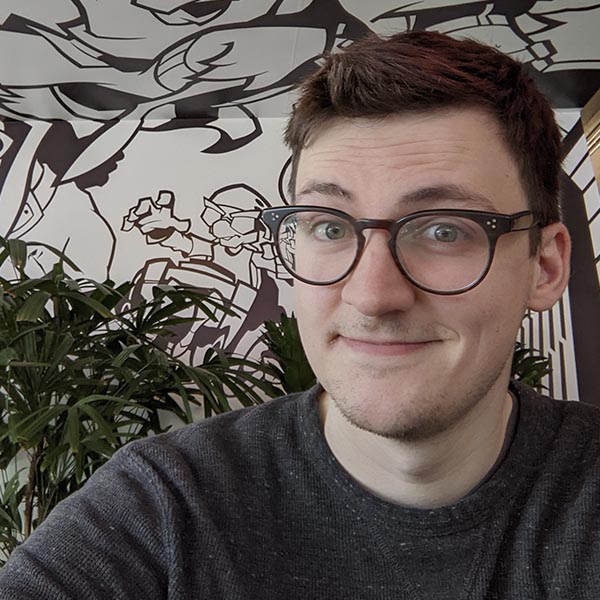
Grey Davenport
He/His
Grey graduated from DigiPen Institute of Technology with a Bachelor of Arts in Music and Sound Design. He started out working QA at Nintendo from 2017–2018 on Pokémon Ultra Sun and Moon and Fire Emblem Warriors. He then found a contract position in dialogue editing with video game developer Harebrained Schemes from 2017–2018, followed by Amazon Games from 2018–2019 for The Grand Tour Game. Shortly after this, he joined Sucker Punch Productions in 2019 for Ghost of Tsushima, after which he landed his first full-time position at Hardsuit Labs from 2019-2021 working on Vampire: The Masquerade – Bloodlines 2, as well as a few Fortnite updates for Epic Games. He was then able to return to Sucker Punch full time from 2021 onward.
Grey originally wanted to work in audio because he saw how fun being a foley artist was and knew how important audio was to bringing virtual creations to life. But eventually along this path, he found a love for programming and became a technical sound designer, a position that creates the tools behind the scenes that help sound designers and composers realize their creative visions. Automating workflows and developing new tools is what he currently works on and continues to build upon with each new challenge.

Hannah Dunlap
She/Her
Hannah graduated from DigiPen Institute of Technology in 2021, earning her Bachelor of Fine Arts in Digital Art and Animation. After becoming an alumna, she began working for game developer ArenaNet on GuildWars 2 as a Creature Artist.
During her time at DigiPen, Hannah explored many different artistic avenues, including rigging, animating, and concept work, to name a few. Ultimately, what she fell in love with, and inevitably began honing her skills in, was creature modeling.
Hannah has always had a soft spot for animals and found herself undeniably fascinated with their behavior, anatomy, locomotion, and really anything and everything about them. Now, she gets to create, model, and texture all sorts of creatures for a living, which she loves.
Aside from her academic and career background, Hannah has also spent about three years teaching and assisting with a variety of DigiPen-backed education programs, including ProjectFun, DigiPen Homeschool Academy, WANIC, and New Market Skills Center.
Awards for Metamorphos, Hannah’s Junior-Senior project at DigiPen
- 2021 Unity Awards – Best Student Project – Winner
- 2021 Intel University Games Showcase – Best Visual Quality – 1st Place
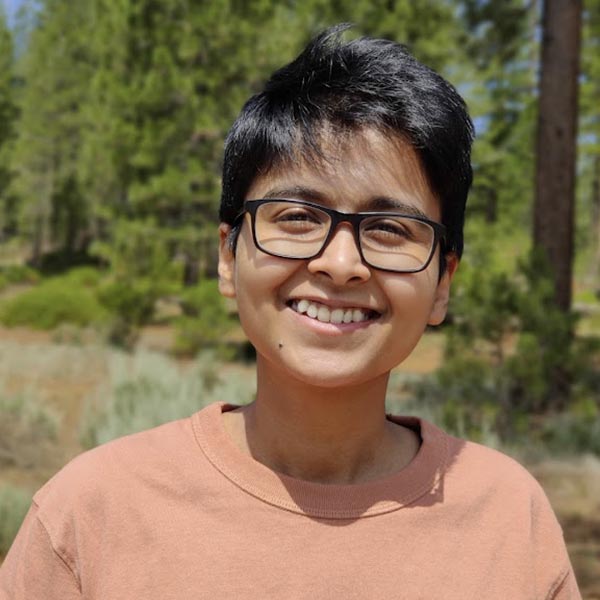
Apu Dutta
He/His
Apu began his academic career by earning a BS from Purdue University in Electrical Engineering. He then went on to earn his MS from Stanford University in the same field. His areas of concentration during his studies were wireless communications and computer vision. He also completed an exchange semester at the National University of Singapore to study communication systems and networking in more depth. Currently, he is pursuing his MFA part time from DigiPen Institute of Technology, where he is focusing on using software tools to make art-asset creation more efficient.
He went on to research spectrum sharing between LTE and Wi-Fi, studying the possibility of the two technologies existing in the same frequency bands, thus optimizing the use of airwaves. He has also written multiple papers in the area of computer vision. Some of his notable projects include developing a machine learning model to identify crude drawings of objects, a program to reconstruct shredded documents using image processing, and creating a neural network to estimate depth in still images that can be used to remove the background from photographs.
Apu started his career as a software engineer at engine designer and manufacturer Cummins, where he worked on diagnostic communications for diesel engines. He later joined Microsoft as a software engineer for Windows in 2015, working on several different areas. He started on the IoT team, adding hardware interrupt support in Windows 10 IoT Core and publishing multiple sample applications for Windows running on development boards like Raspberry Pi, Intel’s MinnowBoard Max, and Qualcomm’s DragonBoard.
Switching over to the mobile connectivity team, Apu took ownership of all the SIM-card-related features for cellular connectivity on Windows. On this team, he worked on coding new eSIM and SMS capabilities, adding support for updating time zones, and creating a communication protocol between the SIM cards, the modem, and the operating system.
In 2020, Apu started volunteering on indie game teams in his spare time. Most notably, he worked as an environment artist and level designer on Lux Primora, a JRPG-inspired game built in Unity. He is currently working on the Windows file system virtualization team on a read-only file system, CimFS, that can be used to create composable Windows images.
Selected Credits
- Windows 10 Release, Microsoft
- Windows 11 Release, Microsoft
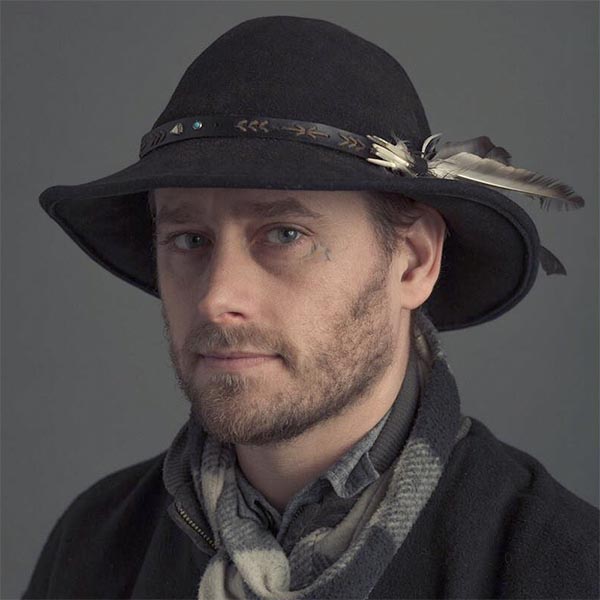
Elijah Strongheart Evenson
He/His
Graduating from the Art Institute of Seattle in 2001 with a degree in Computer Animation, Elijah was immediately hired by Microsoft as cinematic director and modeler. Over the next 20 years, he created video game characters for Microsoft, Capcom, Square Enix, Sony, Airtight Games, Soaring Pixels Games, Hyperspace XR, and 5th Cell. Elijah also is trained as a classical sculptor through the Seattle Sculpture Atelier and has shown his figure sculpture in many galleries and museums in the Seattle area.
Elijah has always excelled in the areas of anatomy and form, but was also known for having a comprehensive knowledge of all the disciplines of art in video game production. With professional experience in modeling, texturing, animation, FX, concept art, and art direction, he has brought his experience into the world of teaching. Since 2014, he has trained hundreds of students in modeling and texturing at DigiPen Institute of Technology, as well as in traditional figurative sculpture through Gage Academy of Art.
Elijah played a key role in the following titles:
- Combat Flight Simulator III
- Crimson Skies II
- Shadowrun
- Dark Void
- Quantum Conundrum
- Murdered: Soul Suspect

Austin Gaspar
He/His
Austin is a controls engineer who has contributed towards a wide array of products, including power tools (Milwaukee Tool), spacecraft and rocket engines (Blue Origin), electric vehicles (Stellantis, formerly Fiat-Chrysler Automotive), and consumer appliances (Fisher & Paykel). Austin started his career by attending a local two-year college near his hometown in Appleton, Wisconsin, but eventually moved on to get his bachelor’s degree in Mechanical Engineering at the University of Wisconsin-Platteville and his master’s degree in Mechanical Engineering with a focus in electric motor control at the University of Wisconsin-Madison.
Controls engineering is a lesser-known discipline that focuses on understanding how to use sensor measurements to make adjustments to actuators and control a system. This type of engineer is essential to electric vehicles, aircraft and spacecraft, heating/cooling systems for large buildings, and robotics. The work requires a background in software, electrical, and mechanical engineering foundation to build an overall system that works well together. In this work, you help to decide what kind of sensors are needed and how many; how fast/hard you can push the limits of the system; how the physics of the electronics affect the physics of the mechanical design; and what kind of software is needed to command the motors and actuators correctly. Austin pursued this discipline because of his inability to choose between passion in both mechanical and electrical engineering, though he didn’t discover this specific type of engineering until his second-to-last year of pursuing his bachelor’s degree.

John “HERM” Hermanowski Jr.
He/His
John Hermanowski Jr., a native of Peekskill, New York, attended The School of Visual Arts in New York City, earning his BA in Illustration with a Minor in Education/Renaissance Art History. After graduating from college, he remained in New York, establishing his own studio and working as a freelance illustrator for publications like MAD magazine and Time, as well as a portraitist doing private commissions. While working in New York City, John was recognized by PRINT magazine in their annual “Top 20 New Visual Artists” in addition to winning the top prizes in the Art Directors Club and Society of Illustrators.
In 2000, John was able to combine his love of science fiction with his art background by joining forces with an industry-leading video game marketing team, working with clients such as Nintendo, SquareSoft, Microsoft, and Sony. Later, he was recruited by Microsoft during the initial development stage for their new Xbox team, playing a pivotal role in the character creation and design of many critically acclaimed Xbox video games. During this time, his team developed the first “normal mapping” tools and node-based shader systems that are an industry standard in games today.
John continued to advance in character development by helping establish Airtight Games, producing new IPs for the biggest Japanese publishers such as Capcom and Square Enix. After a long stint at Airtight, John went on to reimagine the iconic “Rico” for Avalanche Studios’ Just Cause series. He then went on to become the Studio-Lead Character Artist for Keywords International, supporting the biggest publishers in the industry and training in-house artists on the latest character creation techniques. Later, he branched out as the Art Director at BigBox VR (acquired by Facebook parent company Meta in 2021), breaking ground in many new techniques in a multiplayer setting.
Currently, John works as the Lead Character Artist and Concept Artist at game developer and publisher E-Line Media. Additionally, he serves as an adjunct professor at DigiPen Institute of Technology, teaching concept illustration at the undergraduate and graduate levels.

Russell Higgins
He/His
Russell is from Buffalo, New York, and has always had a drive to work on video games, with Halo being his biggest inspiration. He spent two years at Finger Lakes Community College, where he achieved his associates degree in Game Design and Development, then five more years at DigiPen Institute of Technology, where he earned his bachelor’s degree in Digital Arts and Animation. Five months after graduating, Russell was hired as a VFX Tech Artist at game developer 343 Industries working on Halo Infinite. After his contract with 343 ended, he began working as a VFX Artist at Turn 10 Studios, where he works today.
Russell has been working with video games and game engines for the past 10 years. He particularly excels with effect simulations using SideFX’s Houdini and enjoys working with Niagara in Unreal Engine. As part of the BFA pipeline, he developed a method to make 3D Houdini simulations mesh seamlessly with a traditionally animated 2D art style. He volunteered to create a flower generator that could be used in a top-down student game, and has added glowing leaves that lit up a Virtual Reality game. He has experience teaching the basics of animation, which he uses daily to craft explosive and exciting effects for AAA video games.
Selected Credits
- Halo Infinite, 343 Industries
- Forza Motorsport 8, Turn 10 Studios
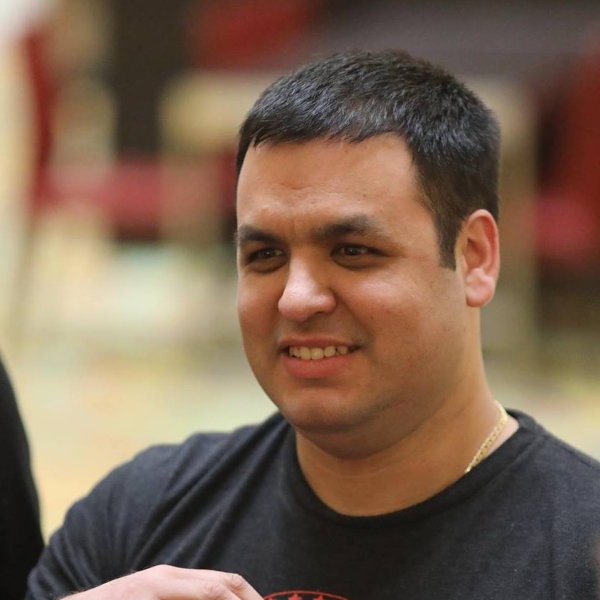
Jorge Antonio Jimenez
He/His
Jorge graduated in 2008, working as a Software Engineer on payroll, human resources, e-commerce, and other enterprise software fields. He earned his master’s degree in IT Management in the summer of 2011, and after six years of pursuing a higher education in game development, was able to enroll at DigiPen Institute of Technology’s MS in Computer Science program with a specialty in Game AI.
Jorge has worked on and off in the game industry since 2015, having the good fortune to work on several major game franchises, such as Halo Infinite and Minecraft. In 2019, he began completing certificates in project management and other specializations to bring the best practices of software engineering into the gaming world. Jorge currently works with first-party studio Very Very Spaceship and teaches DigiPen courses in everything from software development to project management.
Jorge is a full-stack Software Engineer who can easily jump from front end to back end while creating game build pipelines at the same time. He has experience with team dynamics outside of the gaming industry and the certifications to back that knowledge and experience worldwide.
Selected Credits
- Software Engineer, Word, Microsoft
- Animation Tools, Halo Infinite, 343 Industries
- Game AI Programmer, Crucible, Amazon Games Studios
- Software Engineer, Minecraft, Mojang Studios
- Build Software Engineer, Ark Survival Evolved, Studio Wildcard

Jessica Ann Moretti
She/Her
Jessica began her creative journey as a Theatre BA candidate/musical theatre performer at Catawba College in North Carolina. After having the opportunity to do set design for a production of Psycho Beach Party, she decided she might be having more fun behind the scenes than on stage. After completing the MFA in Scenic Design at the conservatory-styled University of the North Carolina School of the Arts (UNCSA), she completed a fellowship in set design with the Kennedy Center in Washington, D.C., worked as a scenic artist and props master at Two River Theatre in Red Bank, New Jersey, then soon found herself in New York City freelancing in both set design and scenic art.
New York brought Jessica ample opportunities, where she spent a few years as an illustrator and designer/draftsperson for the Macy’s Parade Studio, drawing floats and balloons and concept art for Macy’s events. She continued to create scenic art for Broadway and Off Broadway shows in NYC (Cirque Du Soleil’s Paramour, An Act of God on Broadway, and Faustus with Classic Stage Company, to name a few).
Always excited to try new things, Jessica jumped at the chance to work with Laika Studios on Missing Link in 2016. Stop-Motion film had long been an enticing career field to her, as she’s always harbored a love for set design in miniature. After moving to Portland, Oregon, she was fortunate enough to join the crew of Guillermo Del Toro’s stop-motion project Pinocchio as a Set Designer in 2019, and then joined Henry Selick and Jordan Peele’s Wendell & Wild as the Assistant Art Director in 2021. Jessica is currently revisiting her holiday event design roots that she established with Macy’s, and is a Set Designer for the interactive experience Enchant Christmas, which features light mazes and holiday markets in nine locations in the 2022 season.
Jessica brings to the table a comprehensive understanding of visual storytelling, taking into account gathered knowledge of mood, tone, color theory, sculpture, movement, music, and style with any project she approaches. She’s also an ample problem solver with an affinity for the mindset of the late Ming Cho Lee — that design should be its own entity, that it should support but not overshadow the story or guest experience. She gravitates towards minimalism rather than maximalism in her general approach. “Keep It Simple, Silly” is her mission when it comes to communicating and executing her design with build and construction teams, and she believes communicating a design via art direction/ production design strategies is also a worthy art form.
Jessica is also an experienced draftsperson in 2D and 3D, in Vectorworks, SketchUp, and AutoCAD. Having been taught in hand-drafting by industry veteran Henry Grillo at UNCSA, she aims to integrate that type of sensitivity into CAD drafting, as well. Jessica also thoroughly enjoys mentoring and teaching others in design and has taken courses with Eric Maisel (editor of The Artist’s Way) in Creativity Coaching.
Selected Credits/Publications/Awards
- Awarded the John F. Kennedy Design Fellowship, 2010
- Designer and Illustrator for the Emmy-award-winning Macy’s Thanksgiving Day Parade, 2014 and 2015
- Set Designer for Golden Globe winner Missing Link, 2017
- Set Designer for highly anticipated stop-motion film Pinocchio, 2022
- Assistant Art Director for highly anticipated stop-motion film Wendell & Wild, 2022
- Set Designs for Pinocchio shown in the MOMA in New York City, December 2022–March 2023
- Set Designs for Pinocchio featured in the upcoming “The Making Of” publication Guillermo del Toro’s Pinocchio: A Timeless Tale Told Anew by Gina McIntyre, 2022
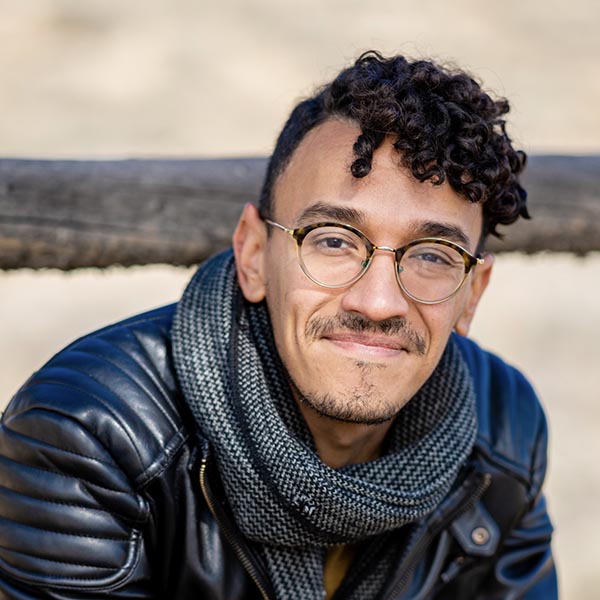
Eddy Ortega
He/His
Eddy is a Creative Director and Multidisciplinary Artist who is passionate about the intersections of digital art, education, and culture. He studied Game Art and Design at Ringling College of Art and Design and subsequently worked at Intel for their internal R&D prototyping team; founded and led Polymath Lab, an independent game studio; and served as Producer and Creative Director at celebrated independent outfit Funomena, where he had the pleasure of shipping Luna for PC, VR, and PlayStation, among various other titles.
Throughout his career, Eddy has focused on leading teams to create heartfelt, innovative, and experimental digital experiences on both established and emerging platforms. He’s enjoyed developing and shipping games on PC, Console, VR, and AR.
Eddy has contributed to projects as a gameplay programmer, 3D artist, game designer, video editor, and senior creative producer. He loves leaning into his experience as a practitioner of multiple disciplines in his work as a team lead and game developer.
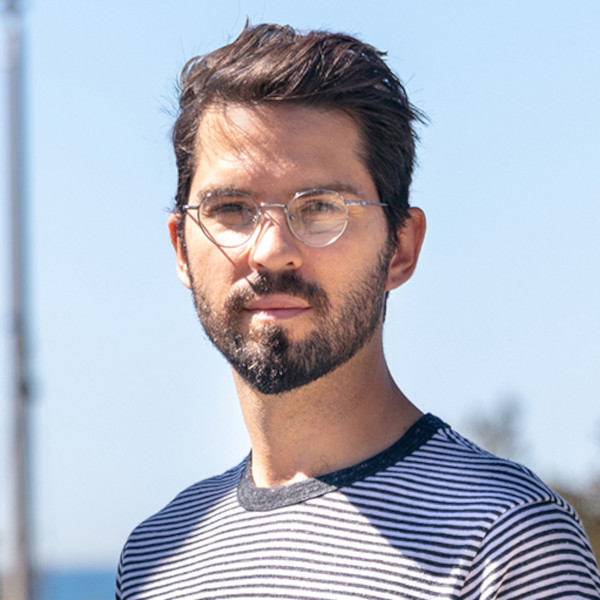
Andrew Theophilopoulos
He/His
Andrew is a freelance concept artist and illustrator who has worked for some of the world’s most well-known studios, such as Sony Animation, Riot Games, and Wizards of the Coast. His work ranges from 40-foot movie posters on Los Angeles billboards to 4-foot oil paintings of Dragonball and The Legend of Zelda.
In recent years, Andrew has included Blender 3D in his workflow, which has increased both the quality of his artwork and the speed at which he can complete them.
His Summer 2023 Masterclass workshop in concept art is aimed at future-proofing students’ workflows and shining a light on the daily life of an artist working on AAA projects. The course introduces a mix of 2D painting over a rough 3D render, demonstrating step by step how to create blockbuster concept art and illustrations for students’ portfolios.

Tami Tritz
She/Her
Tami is a Kirkland, Washington native and discovered DigiPen Institute of Technology through the WANIC programs offered through her high school. After spending most of middle school and high school drawing in every single class, she was thrilled to have a path to a career as an artist! She joined Microsoft in the Mixed Reality Organization as a Technical Artist shortly after graduating from DigiPen in 2019 with a Bachelor of Fine Arts in Digital Art and Animation.
While studying at DigiPen, Tami initially planned to be an animator and took a class in Character Rigging to further that goal. While in class, she discovered the relative objectivity of rigging and scripting worked very well with her brain, and decided to pursue it as her career instead. Now, in her work as a Technical Artist, she builds skeletons to puppeteer character models, writes scripts to automate processes for other artists, and oversees ingestion into the engine. She loves being able to solve problems for her coworkers and enable them to work faster and more efficiently. Outside of her work, you can usually find her at her sewing machine making another princess gown, or prepping for one of the cosplay panels she runs at local comic cons.
Most of Tami’s work at Microsoft is still unreleased, but keep an eye out for the Mesh avatars in a Microsoft Teams meeting near you! It’s currently in private preview.

Mike Vaillancourt
He/His
Mike attended Maryland Institute College of Art and has associates degrees from Shoreline Community College in Game Art and Design, Design, and Project Management. He is an award-winning illustrator and art director in tabletop and video games who has worked on properties such as Halo: Reach, Destiny, Shadowrun, BattleTech, Warmachine/Hordes, and Magic: The Gathering. As one of the Art Directors for the Magic: The Gathering packaging and product team, the first tentpole sets that he’s contributed to will be releasing in 2023. His work has also been seen in episode 9 of the Halo TV series in 2022.
As a United States Navy veteran, his experience has been invaluable in mechanical design, concept art, and illustration. Outside of his fantasy/sci-work, Mike designs merchandise for the world’s largest military aviation podcast, The Fighter Pilot Podcast. His passion and experience in naval aviation led him to lend his voice acting talents as a carrier aircraft departure controller and as a pilot in the Raven One campaign of Digital Combat Simulator.
Over his nearly two-decade career, Mike has been known as an artist’s art director where his experience as an illustrator, concept artist, and designer has been invaluable in mentoring artists in anatomy, perspective, mechanical design, composition, lighting, and graphic design for sci-fi, fantasy, and period artwork.
Selected Credits
- Shadowrun: 20th Anniversary Edition, Catalyst Game Labs
- Halo: Reach Limited Edition “Dr. Halsey’s Journal,” Microsoft 343/Bungie
- Destiny Limited Edition “Field Manual,” Bungie
- Warmachine/Hordes/Level 7/No Quarter/Iron Kingdoms, Privateer Press
- Magic: The Gathering “The Brothers’ War,” “March of the Machine,” “Lord of the Rings,” and “The Lost Caverns of Ixalan,” Wizards of the Coast
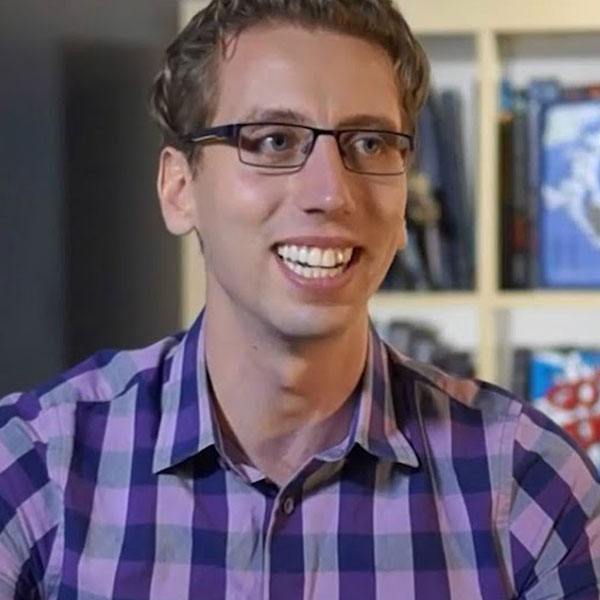
Zach Weisman
He/His
Zach is the Lead Designer and Co-Founder of tabletop game company Guildhall Studios. He grew up surrounded by games and has been working as a designer for over ten years. His first game, Got ‘Em, was released in 2007. At game developer Harebrained Schemes, he worked as a designer for the digitally enhanced board game Golem Arcana and its expansions, as well as working on the RPG Shadowrun Returns. At Calliope Games, he led the development of the Titan Series as the in-house Lead Designer, collaborating with designers such as Richard Garfield, Eric Lang, Paul Peterson, and others. He also designed Menu Masters and Adorable Monsters while developing the Titan Series.

Carter Williamson
He/His
Carter attained his Management Information Systems (MIS) degree from Western Washington University in 2016 with a minor in Computer Science. Following his graduation, he joined the consulting firm Luxoft, where he built proof-of-concept projects to investigate how IoT devices can be used in sales scenarios to help understand and drive consumer behavior. He also traveled across the country installing HTC Vive VR headsets in Microsoft stores while thoroughly testing all of the games, as well.
Carter found automation and DevOps work to be fast, fun, and in high demand. He picked up a copy of O’Reilly’s Kubernetes Up and Running and began experimenting. This eventually led him to an infrastructure team at Mercedes-Benz R&D North America (MBRDNA). In this new role, he learned a wide range of tools, topics, and concepts from industry experts both in Seattle and around the world.
Carter traveled to Germany to run workshops, plan projects, and explore the German countryside. During the COVID-19 lockdown, it became clear to him that the work he was doing at MBRDNA wasn’t driven by passion and he started to look for something new and exciting.
He followed his former manager and mentor to a small cloud security company, Anitian, where he currently leads multiple cross-team projects related to cloud compliance and security automation.
In these roles, Carter had opportunities to work with some exciting technology and experience what it means to work on a team at an enterprise-scale company. He is a subject matter expert in Python, Docker, and Infrastructure as Code. He’s also become efficient in networking, Kubernetes, Linux, distributed system architectures, team building/hiring, and research and development.
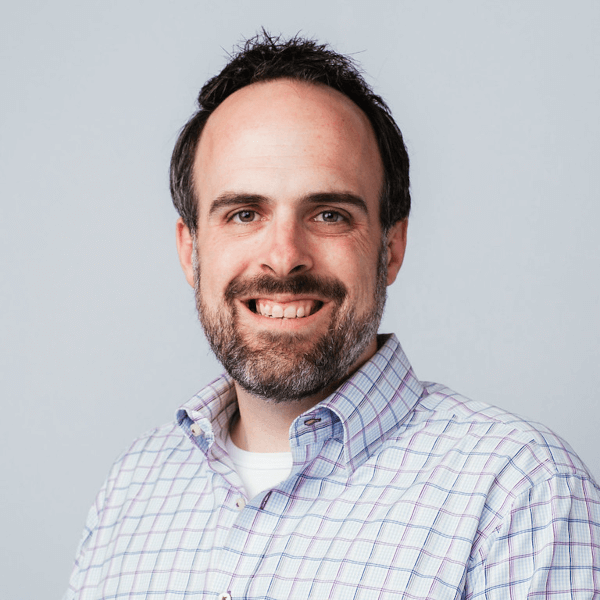
Robert Worl
He/His
Robert graduated from the South Dakota School of Mines and Technology with a BS in Electrical and Electronics Engineering, where he focused his studies on applied electromagnetics. He has a deep background in advanced antenna and sensor system design and has spent his career developing electronically scanning antenna technology and the systems that use them.
As Director of Electrical and RF Engineering at Echodyne, Robert led the product engineering efforts for the company’s cognitive AV radar, EchoDrive, a new kind of perception sensor for highly autonomous vehicles. Robert was also a principal contributor to the design of Echodyne’s EchoGuard and EchoFlight products.
Prior to joining Echodyne, Robert held several positions at Boeing, including Lead Engineer for Communications, Navigation and Identification Systems and Lead Electrophysics Engineer for K/Ka-Band Mobile Satellite Service phased array technology. His objective is to bring novel, complex radar and satellite technologies from incubation through rigorous development processes to create world-class products.
Selected Credits/Publications
- Over 20 patents granted in the area of advanced antenna technology, satellite communications, radar, and perception systems
- Participant in the National Academy of Engineering’s Frontiers of Engineering Symposium, 2013 and 2015
- 2012 Boeing Special Invention Award
- 2011 Boeing Research and Technology Breakthrough Award for K/Ka-band mobile SATCOM terminal advancements
